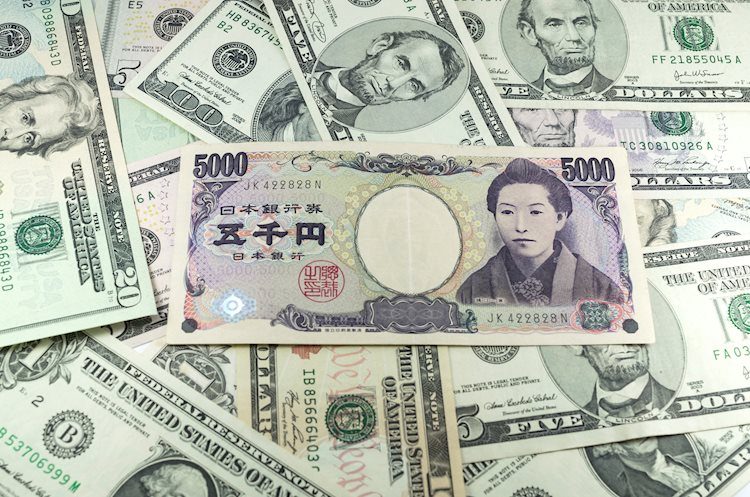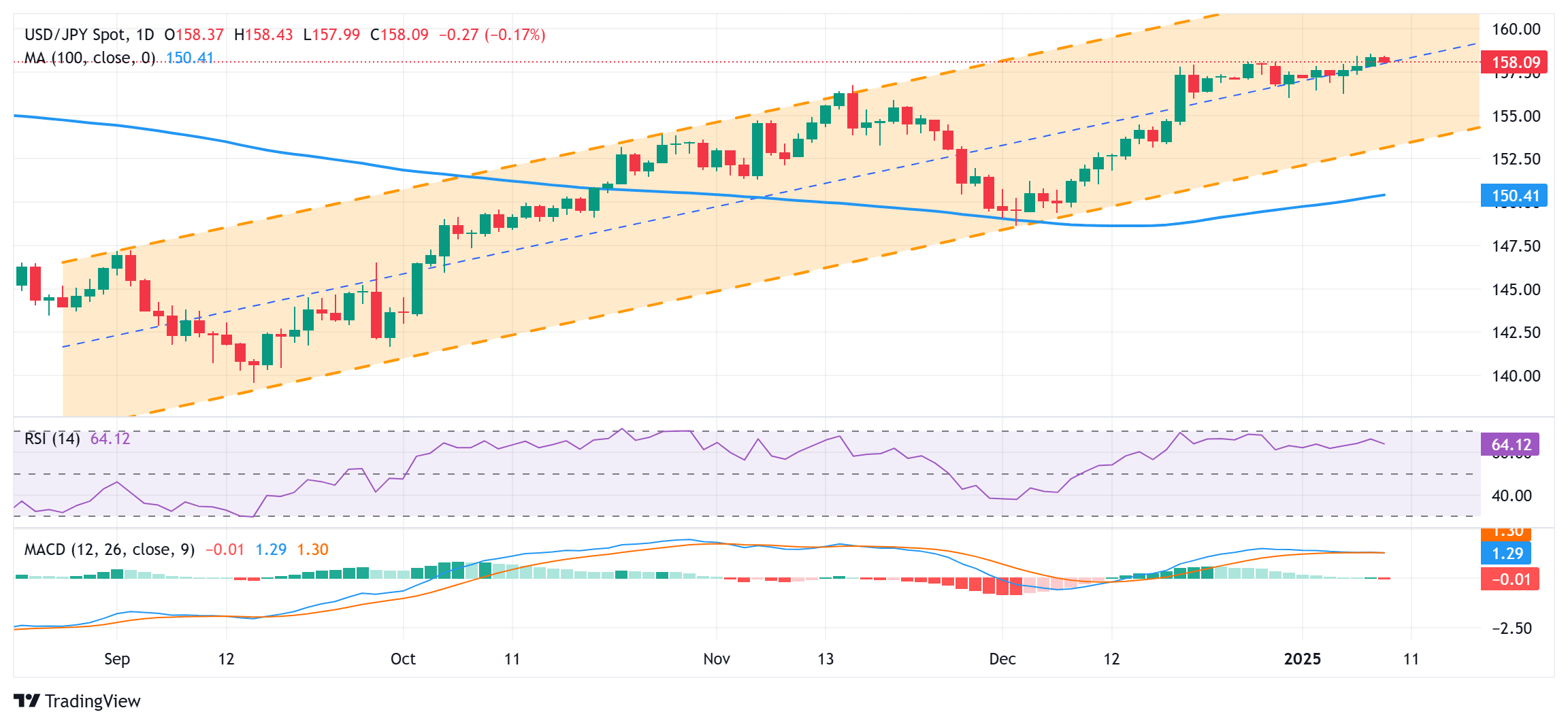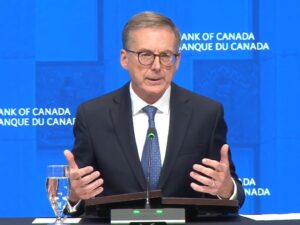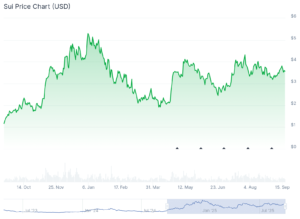Japanese Yen struggles to capitalize on intraday gains amid BoJ rate-hike uncertainty

- The Japanese Yen strengthens in reaction to strong wage growth data from Japan.
- The uncertainty over the likely timing of the next BoJ rate hike might cap the JPY.
- Hawkish Fed, and elevated US bond yields should support the USD/JPY pair.
The Japanese Yen (JPY) trims a part of intraday gains and assists the USD/JPY pair to rebound around 25-30 pips from the Asian session low amid wavering Bank of Japan (BoJ) rate hike expectations. Strong wage growth data from Japan released earlier this Thursday, along with the broadening inflationary pressure, backs the case for further policy tightening by the BoJ. Investors, however, remain skeptical about the likely timing of when the BoJ will hike interest rates again. Moreover, the recent widening of the US-Japan rate differential, bolstered by the Federal Reserve’s (Fed) hawkish shift, contributes to capping the lower-yielding JPY.
Meanwhile, speculations that Japanese authorities might intervene in the market to prop up the domestic currency might hold back the JPY bears from placing aggressive bets. Furthermore, the cautious market mood, geopolitical risks and concerns about US President-elect Donald Trump’s protectionist policy should offer support to the safe-haven JPY. Apart from this, a modest pullback in the US Treasury bond yields keeps the US Dollar (USD) bulls on the defensive and should contribute to capping the USD/JPY pair.
Japanese Yen sticks to strong wage growth data-inspired gains; lacks follow-through
- Government data released this Thursday showed that base salary, or regular pay, in Japan rose 2.7% in November, marking the fastest increase since 1992, while overtime pay grew 1.6% from a revised 0.7% gain in October.
- Meanwhile, inflation-adjusted real wages fell for the fourth consecutive month, by 0.3% in November. The inflation rate the ministry uses for wage calculation accelerated from 2.6% in October to 3.4% from a year earlier.
- The Bank of Japan has repeatedly said sustained, broad-based wage hikes are a prerequisite for pushing up borrowing costs and the data support prospects for a further rate hike, providing a modest lift to the Japanese Yen.
- Investors, however, seem convinced that the BoJ will not pull the trigger at its next monetary policy meeting in January and wait until March amid the uncertainty over US President-elect Donald Trump’s protectionist policies.
- CNN reported on Wednesday, citing unnamed sources familiar with the matter, that Trump is considering declaring a national economic emergency to provide legal justification for a series of universal tariffs on allies and adversaries.
- The yield on the benchmark 10-year US government bond shot to its highest level since April 25 in reaction to the news, which, to a larger extent, overshadowed mixed labor market data released from the US on Wednesday.
- The Automatic Data Processing (ADP) reported that US private sector employment rose by 122,000 in December as compared to the 146,000 increase recorded in November and below the market expectation of 140,000.
- Separately, the US Department of Labor reported that the number of Americans filing new applications for unemployment benefits fell to an 11-month low of 201K in the week ending January 4, pointing to a stable labor market.
- Furthermore, the Minutes of the December 17-18 FOMC meeting revealed that policymakers were in favor of slowing the pace of rate cuts amid concerns about slower progress on curbing the pace of inflation toward the 2% target.
- Fed Governor Christopher Waller said that inflation should continue to fall and make further progress towards the 2% target, which should allow the US central bank to further reduce interest rates, though at an uncertain pace.
- Investors will continue to take cues from speeches by a slew of influential FOMC members later this Thursday, though the focus will remain glued to the closely-watched US Nonfarm Payrolls (NFP) report on Friday.
USD/JPY dip-buyer near 157.55-157.50 pivotal support should limit deeper losses

From a technical perspective, any subsequent slide is likely to attract some dip-buying near the 157.55-157.50 horizontal zone. Some follow-through selling, however, could make the USD/JPY pair vulnerable to accelerate the fall further towards the 157.00 mark en route to the next relevant support near the 156.75 region and the weekly low, around the 156.25-156.20 area. This is followed by the 156.00 mark, which if broken decisively might shift the bias in favor of bearish traders.
On the flip side, the 158.55 region, or the multi-month top touched on Wednesday, now seems to act as an immediate hurdle. A sustained strength beyond could lift the USD/JPY pair to the 159.00 mark. The momentum could extend further towards the 159.45 intermediate hurdle before spot prices aim to reclaim the 160.00 psychological mark.
Japanese Yen FAQs
The Japanese Yen (JPY) is one of the world’s most traded currencies. Its value is broadly determined by the performance of the Japanese economy, but more specifically by the Bank of Japan’s policy, the differential between Japanese and US bond yields, or risk sentiment among traders, among other factors.
One of the Bank of Japan’s mandates is currency control, so its moves are key for the Yen. The BoJ has directly intervened in currency markets sometimes, generally to lower the value of the Yen, although it refrains from doing it often due to political concerns of its main trading partners. The BoJ ultra-loose monetary policy between 2013 and 2024 caused the Yen to depreciate against its main currency peers due to an increasing policy divergence between the Bank of Japan and other main central banks. More recently, the gradually unwinding of this ultra-loose policy has given some support to the Yen.
Over the last decade, the BoJ’s stance of sticking to ultra-loose monetary policy has led to a widening policy divergence with other central banks, particularly with the US Federal Reserve. This supported a widening of the differential between the 10-year US and Japanese bonds, which favored the US Dollar against the Japanese Yen. The BoJ decision in 2024 to gradually abandon the ultra-loose policy, coupled with interest-rate cuts in other major central banks, is narrowing this differential.
The Japanese Yen is often seen as a safe-haven investment. This means that in times of market stress, investors are more likely to put their money in the Japanese currency due to its supposed reliability and stability. Turbulent times are likely to strengthen the Yen’s value against other currencies seen as more risky to invest in.





